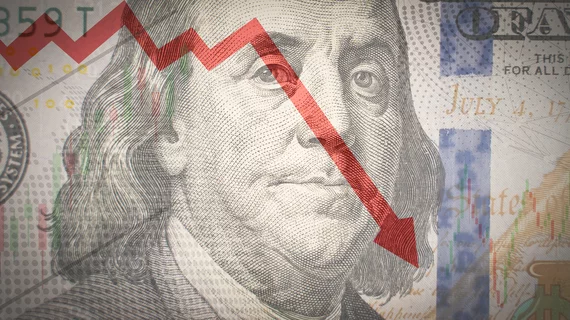Imaging among the categories seeing greatest 2-year decline in private equity deals
Imaging is among the categories seeing the greatest two-year decline in private equity deals, according to new research from data firm Pitchbook.
The analysis also charted similar downturns in other healthcare categories. Deals for hospitals and skilled nursing facilities, for example, are rare, with no major PE investments in these categories since 2018. Meanwhile, other categories such as cardiovascular care, specialty pharmacies and clinical trials saw the greatest two-year growth in PE deals, Pitchbook noted.
Report author Rebecca Springer, PhD, highlighted decreasing PE interest in strategies focused on achieving higher out-of-network rates. As one example, following its 2018 acquisition by KKR, multispecialty radiology provider Envision Healthcare had pursued these payments to pad profits.
However, this strategy has changed with the advent of the No Surprises Act.
“While investors chased higher out-of-network rates in the past, they now avoid them assiduously in categories including acute-care physician staffing, [substance use disorder] treatment, and EMT,” Springer, lead healthcare analyst for Pitchbook, wrote July 8.
Out-of-network billing by radiologists and other physicians was the subject of “intense contention” between providers and payers in the past, the report noted. But payers succeeded in “significantly” reducing OON payments leading up to the No Surprises Act going into effect in 2022.
“We have seen deal activity for physician staffing groups slow considerably, and deals that are getting done are for smaller and regional groups that have prioritized in-network contracts,” Springer wrote.
The report estimated that private equity currently owns 3.3% of U.S. healthcare providers by revenue. While PE has been a central focus in public debates about consolidation, this segment represents “a smaller slice of the market than many would assume.” Springer noted that PE investment in healthcare dates to the 1980s and has grown in terms of absolute transaction volume since 2000. This growth can be attributed to an increase in healthcare providers as a proportion of PE deals, rising from 3.1% in 2000-2002 to a peak of 8.1% in 2018. Since that year, healthcare providers have declined as a proportion of PE deal count, with a three-year rolling average currently at 6.3%.
She highlighted the number of PE-backed healthcare companies at a given time as a reliable way to gauge the scope of investment activity. This number has increased from 350 in 2017 to 648 at the close of March. But the year-over-year growth rate in PE investment has slowed from 25% in 2018 to less than 1% in Q1.
“Healthcare providers have long been a part of PE portfolios, but growth in the total number of PE-backed companies has slowed over the past six years,” the report noted.
Springer questioned claims that PE is driving the movement of physicians from private practice to employed roles. She cited an April report commissioned by the Physician Advocacy Institute, which found that nearly 80% of doctors worked for a corporate entity. Hospitals accounted for 71% of this tally (or 55% of all physicians), while other corporate entities made up 29% (or 23% of all physicians). Along with PE, the latter category included payers such as UnitedHealth/Optum.
“There are many reasons why physician-owners sell their practices to hospitals and corporate entities,” the report noted. “Physician-owners nearing retirement often have a significant proportion of their personal wealth tied up in the value of their practice, and they may sell the practice in order to liquidate this wealth.”
Robbie Allen, MBA, the CEO of private equity-backed cardiology group US Heart and Vascular, shared the report on social media earlier this month. Radiology Partners’ top exec Rich Whitney, MBA, also reposted Allen’s comments.
“Punchline shortcut—the villains might not be who you think they are, and the scale of different player's involvement is likely surprising to most,” Allen wrote. “As an advocate for the clinicians delivering the actual care every day (and until recently, almost always the ones with the least power and quietest voice), this is the kind of transparent discussion we need to start having.”
You can find the full report for free here. For a different take, an analysis published by Health Affairs in March charted an uptick in private equity ownership across radiology and other specialties, with investors holding a dominant market share in certain geographies.

